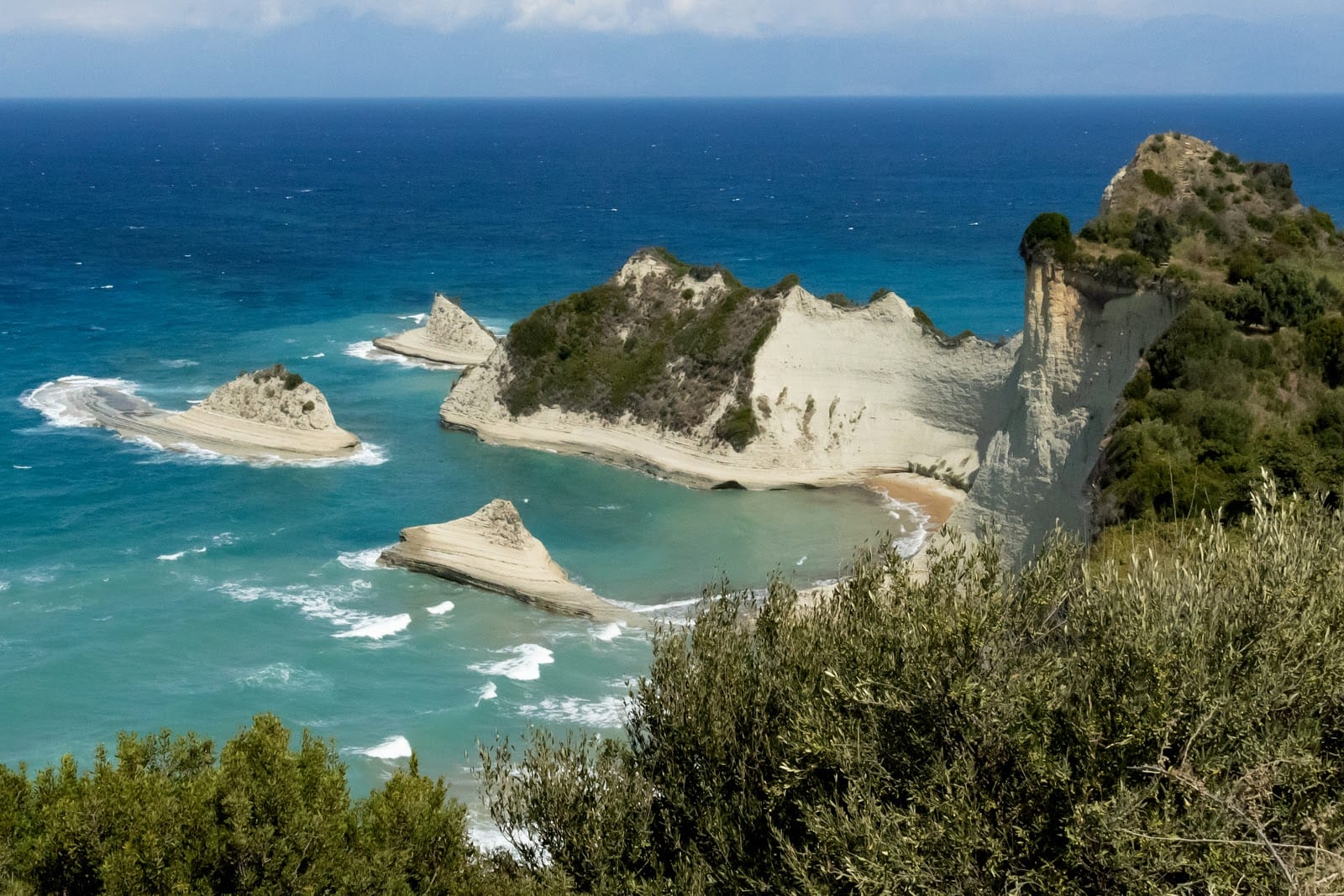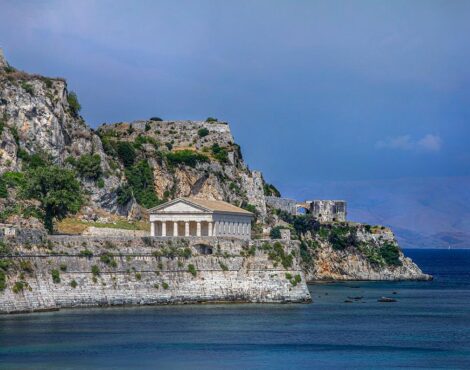Corfu’s coastline is dotted with lighthouses that have guided sailors for centuries. Some stand on dramatic cliffs, others on quiet capes, all with stories that connect the island’s maritime past with its present. Visiting them is not only about history but also about walking along beautiful trails, exploring hidden parts of the island, and enjoying views where the sea meets the sky.
Cape Drastis Lighthouse
At the northwestern edge of Corfu lies Cape Drastis, famous for its sculpted cliffs and wild beauty. The lighthouse here is smaller than others but the setting is unforgettable. Reaching it involves a walk along dirt paths through olive groves, opening suddenly to views of the open Ionian Sea. At sunset the horizon glows and the lighthouse feels like a quiet guardian of the cliffs.
Othonoi Lighthouse
The Diapontia Islands northwest of Corfu also carry part of this story. On Othonoi, the westernmost point of Greece, stands a lighthouse built in the 19th century by the British. It once guided ships crossing from Italy to Corfu. The island itself is remote, with few residents, and the lighthouse gives a sense of isolation and endurance.
Lefkimmi Lighthouse
In the south, the lighthouse of Lefkimmi marks the cape where the Ionian meets the open sea. Fishermen and sailors relied on it for generations when returning home. The surrounding area is full of sandy beaches and wetlands, so a visit combines maritime history with natural landscapes.
Peristeres Lighthouse
Located near Paxos, but part of the wider Ionian network, this lighthouse also served Corfu’s seafarers. Though harder to reach, it tells of how the Ionian islands were linked together by lights and signals, long before GPS and modern navigation.
The Role of Lighthouses in Corfu’s History
Lighthouses were essential for Corfu’s position at the crossroads of Mediterranean trade. Venetian, French and British rulers all invested in maritime infrastructure. The lights ensured that ships carrying goods, olive oil, wine and grain could approach the island safely. They also served military purposes, guiding fleets and watching over strategic passages.
A Trail for Explorers
For modern visitors, following Corfu’s lighthouses is like tracing a hidden cultural route. Each one requires a small journey, often along coastal paths or village roads. Along the way, you discover viewpoints, beaches and landscapes far from the crowds. The lighthouses may no longer be vital for navigation, but they remain symbols of guidance, resilience and connection to the sea.
Photography and Atmosphere
Lighthouses offer some of the best photography spots on the island. The contrast between stone towers and endless blue is striking. Sunrises at Lefkimmi, sunsets at Drastis, or storm clouds over Othonoi create dramatic scenes. For many travelers, the journey to a lighthouse becomes a meditation, a reminder of how humans and the sea have been bound together for centuries.
Guardians of Memory
Though many lighthouses today are automated and unmanned, they continue to stand as guardians of memory. They remind locals of family members who worked at sea, of times when sailing was dangerous and light meant survival. For visitors they are quiet landmarks that combine history, nature and poetry in one experience.





